Welcome to our in-depth exploration of a highly debated topic in the world of wastewater management – the safety of flushable wipes. The use of flushable wipes has become increasingly popular in recent years, with many individuals turning to these convenient alternatives to traditional toilet paper. However, the question remains – are flushable wipes really safe to flush?
In this article, we will examine the claims made by manufacturers, assess industry guidelines and standards, and explore the challenges faced by sewage treatment plants in managing these wipes. We’ll also highlight the environmental impact of flushable wipes and provide guidance on proper disposal methods to avoid costly plumbing repairs.
Our goal is to educate readers on the potential risks associated with flushing flushable wipes and promote responsible flushing habits. Join us as we unravel the truth about the safety of flushable wipes.
Understanding Flushable Wipes: What Are They?
Flushable wipes are a relatively recent addition to personal hygiene products. These are toilet-friendly wipes that are marketed as a quick, convenient, and easy-to-use alternative to traditional toilet paper. They come in various sizes and are designed to be flushed down the toilet after use.
Most flushable wipes are made using a combination of natural and synthetic fibers, such as cotton, rayon, and polyester. They are pre-moistened with water, which makes them more effective in cleaning and provides a refreshing feel.
The wipes are designed to break down in water, which is why they are marketed as safe to flush. They are made with materials that are meant to dissolve and disintegrate quickly, similar to toilet paper. Manufacturers claim that flushable wipes are safe for use with septic systems and wastewater treatment plants.
Types of Flushable Wipes
There are different types of flushable wipes available in the market. Some are designed explicitly for babies, while others are marketed for personal hygiene. Some of the most common types of flushable wipes include:
- Baby wipes
- Facial wipes
- Feminine hygiene wipes
- Incontinence wipes
Each type of flushable wipe is formulated specifically for its intended use and may contain different ingredients or materials. It is essential to ensure that the wipes you buy are explicitly labeled as “flushable” before disposing of them in the toilet.
The Impact on Wastewater Systems
Flushable wipes may be convenient for personal hygiene, but they are causing significant problems for wastewater systems. Unlike toilet paper, which disintegrates quickly in water, flushable wipes do not break down as easily, resulting in clogs, blockages, and equipment failures in sewer systems.
| Problem | Impact |
|---|---|
| Clogs | Can result in sewage backups, overflows, and potential health hazards |
| Blockages | Can damage pipes, pumps, and other equipment in the sewage treatment process |
| Equipment Failures | May require costly repairs and maintenance |
Furthermore, wastewater treatment plants are not designed to handle flushable wipes, and these wipes can end up in rivers, lakes, and oceans, causing harm to aquatic life and the environment.
The Challenges Faced by Sewage Treatment Plants
According to the Water Environment Federation, the improper disposal of flushable wipes is one of the biggest challenges faced by wastewater treatment plants today. These facilities are not equipped to handle the volume of wipes being flushed, and the wipes can get tangled in pumps and screens, causing major blockages and equipment failures. In addition, removing these wipes from the treatment process is a manual and time-consuming task that can take up resources and increase operational costs.
While some wastewater treatment plants have installed grinders and screens to remove flushable wipes, this is not a sustainable solution. It is important for individuals to understand the impact of their flushing habits and take responsibility for proper disposal methods.
Analyzing the Safety Claims
Manufacturers of flushable wipes claim that their products are safe to flush. However, recent studies show that these claims may not be entirely accurate. While flushable wipes may pass through toilets and pipes, they can cause significant damage to sewage treatment plants, resulting in costly repairs and maintenance.
Industry Guidelines and Standards
The non-woven fabric used to make flushable wipes is not easily broken down by water. This means that when flushed, the wipes can cause blockages and clogs in pipes and sewage systems. While there are industry guidelines and standards for flushability, these are largely voluntary and not always followed by manufacturers.
| Industry Guidelines and Standards | Description |
|---|---|
| INDA/EDANA Guidelines | These guidelines provide a list of tests that wipes must pass in order to be considered flushable. |
| Water UK Standard | This standard sets out the criteria for determining whether a product is safe to flush. |
Despite the existence of these guidelines, there is no universal standard for determining flushability, and compliance with voluntary standards does not guarantee that flushable wipes are truly safe to flush.
Environmental Concerns: Are Flushable Wipes Eco-Friendly?
Flushable wipes have become a popular alternative to traditional toilet paper due to their convenience and purported safety for flushing. However, the impact of these wipes on the environment has become a significant concern that cannot be ignored.
While flushable wipes are marketed as biodegradable, they often contain synthetic materials that do not break down easily in water. These materials can cause problems in the environment, such as water pollution and harm to marine life. In addition, the production and disposal of flushable wipes contribute to the growing problem of plastic waste.
Consumers looking for more environmentally friendly alternatives have several options. Some brands offer flushable wipes made from biodegradable materials, such as bamboo or cotton. Other options include using a bidet or switching to reusable cloth wipes.
Ultimately, it is up to consumers to be mindful of the environmental impact of their choices and to consider the long-term effects on the planet when choosing which products to use.
Proper Disposal Methods
While flushable wipes are marketed as safe to flush, it is important to note that they can still cause problems for wastewater systems and plumbing. To prevent damage and clogging, it is recommended that individuals use proper disposal methods for flushable wipes.
Here are some guidelines to follow:
- Do not flush wipes, even if they are labeled as “flushable.”
- Place used wipes in the trash can instead of the toilet.
- If you use wipes for personal hygiene, consider switching to toilet paper or a bidet as a more eco-friendly alternative.
- If you must use wipes, opt for ones that are designed for disposal in the trash can instead of the toilet.
- Ensure that wipes are disposed of properly to avoid littering and potential harm to the environment.
By following these proper disposal methods, individuals can help prevent costly damages and maintain the proper functioning of wastewater systems and plumbing systems.
The Future of Flushable Wipes
As concerns about flushable wipes continue to grow, there is increasing pressure on manufacturers to take responsibility and improve the safety of their products. Several initiatives have been launched in recent years to address the problems caused by flushable wipes.
Improvements in Design
Some manufacturers are already taking steps to improve the design of their flushable wipes, making them more water-soluble and easier to break down in wastewater systems. New guidelines and standards are being developed to ensure that flushable wipes are truly safe to flush.
Rising Demand for Eco-Friendly Alternatives
Environmental concerns are also driving demand for eco-friendly alternatives to flushable wipes. Many consumers are turning to reusable cloth wipes or bidets as a more sustainable option. Manufacturers are responding to this demand by developing new products that are more environmentally friendly.
Potential Regulations
Regulators are also taking notice of the problems caused by flushable wipes. In 2018, the United States Congress passed legislation requiring the Federal Trade Commission to create new labeling standards for flushable wipes. This is a step towards more stringent regulations that may be implemented in the future.
The Importance of Continued Research
As flushable wipes continue to be a topic of discussion, it is essential to conduct further research on their impact on wastewater systems and the environment. Continued innovation and collaboration between manufacturers, regulators, and wastewater treatment professionals are needed to ensure that flushable wipes are truly safe to flush.
Expert Opinions: What Do Professionals Say?
Industry experts have varying opinions on the safety of flushable wipes. While some argue that these wipes are safe to flush and meet industry guidelines, others have concerns about the impact of flushable wipes on wastewater systems. Here are some expert opinions on the matter:
| Name | Position | Quote |
|---|---|---|
| David Cox | Director of Operations at Clean Water Services (Oregon) | “Flushable wipes are one of the biggest challenges we face in our sewage treatment plants. They cause blockages in pipes and pumps, increase maintenance costs, and can lead to equipment failures.” |
| Dr. Ryan Sinclair | Associate Professor, Loma Linda University School of Public Health | “Even though flushable wipes may break down in lab tests, they can still cause problems in real-world scenarios. Consumers need to be aware of the potential risks and dispose of these wipes properly.” |
| Kate O’Brien | President of INDA (Association of the Nonwoven Fabrics Industry) | “Flushable wipes are designed and tested to be safe to flush. As long as consumers follow flushing instructions and dispose of these wipes responsibly, they should not cause any issues.” |
| Jim Hallett | CEO of GFL Environmental | “Flushable wipes have become a significant problem for wastewater treatment plants across North America. While some wipes may break down eventually, they can cause immediate damage and clogging in pipes.” |
As we can see, there is no consensus on the safety of flushable wipes. It is crucial for consumers to be aware of the potential risks and take responsibility for proper disposal methods to prevent any issues in their plumbing systems and wastewater treatment facilities.
Consumer Awareness and Education
As consumers, it is crucial to be informed about the potential risks associated with flushable wipes. While manufacturers may claim that these wipes are safe to flush, it is important to understand the challenges faced by sewage treatment plants in managing them. By educating ourselves on proper flushing practices, we can prevent costly damages to our plumbing systems and protect our environment.
Tips for Responsible Flushing
Here are some tips to keep in mind when disposing of flushable wipes:
- Read the packaging carefully to determine whether the wipes are truly flushable.
- Avoid flushing any wipes labeled as “non-flushable” or “not recommended for flushing”.
- Limit the number of wipes flushed at one time.
- Do not flush wipes along with other materials such as feminine hygiene products, paper towels, or baby wipes.
- Consider using alternative options such as moistened toilet paper or a bidet.
By following these tips, we can do our part to promote responsible flushing habits and prevent potential damages to our plumbing and wastewater systems.
Case Studies: Real-Life Consequences
Despite manufacturers claiming flushable wipes are safe to flush, there have been numerous instances where flushing these wipes has led to costly and inconvenient consequences.
| Case Study 1 | Location | Consequence |
|---|---|---|
| Auckland, New Zealand | Wastewater Treatment Plant | The plant faced clogging and equipment damage due to the accumulation of flushable wipes. The clean-up cost more than $45,000. |
| Charleston, South Carolina | Apartment Complex | Flushable wipes caused a blockage that led to sewage backing up into several apartment units. The resulting damage and repair costs exceeded $10,000. |
| London, England | Sewer System | The Thames Water Utilities reported that flushable wipes and other non-dispersible items caused more than 3000 blockages a month. The costs associated with repairs, clean-up, and maintenance are estimated to reach $130 million annually. |
These cases illustrate the potential risks associated with flushing flushable wipes. It is crucial for individuals to properly dispose of these wipes to prevent damages to plumbing systems and wastewater treatment plants.
FAQ – Frequently Asked Questions
Here are some common questions related to the safety of flushable wipes:
Q: Are flushable wipes really safe to flush?
A: While flushable wipes are marketed as safe to flush, they can cause significant damage to plumbing systems and wastewater treatment plants. It is advisable to dispose of these wipes in the trash to avoid any potential risks.
Q: How should I dispose of flushable wipes?
A: It is recommended to dispose of flushable wipes in the trash, even if the packaging indicates that they are safe to flush. This will prevent any clogging or damage to plumbing systems and wastewater treatment plants.
Q: Can I flush biodegradable wipes?
A: Biodegradable wipes may break down more easily than traditional wet wipes. However, it is still recommended to dispose of them in the trash instead of flushing to avoid any potential risks.
Q: What are the risks of flushing flushable wipes?
A: Flushing flushable wipes can cause clogs and backups in plumbing systems, leading to costly repairs. They can also damage wastewater treatment plants and contribute to environmental pollution.
Q: Are there any alternatives to flushable wipes?
A: Yes, there are several alternatives to flushable wipes, including using toilet paper, bidets, or wet washcloths. These options are more environmentally friendly and less likely to cause damage to plumbing systems or wastewater treatment plants.
Q: Can flushable wipes be recycled?
A: No, flushable wipes cannot be recycled. They should be disposed of in the trash to prevent any potential harm to the environment or wastewater treatment plants.










